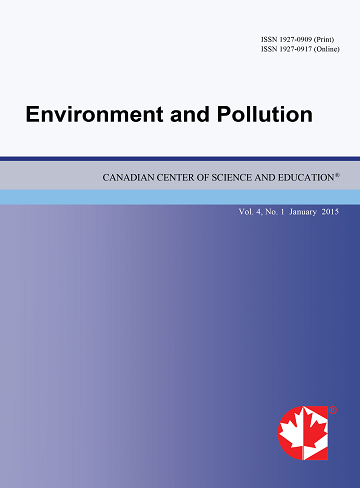Measurement of Monocyclic Aromatic Amines in an Urban Air
- Inkyu Han
- Je-Seung Lee
- Soo-Mi Eo
Abstract
Personal air exposure to monocyclic aromatic amines (MAA) is a growing concern, in large part, due to their ubiquitous presence in the general environment and their potential health risk for bladder cancer. It is unclear what other sources of airborne MAA are for general population, due to low concentrations in the air. Detecting “trace” levels of MAAs requires a sensitive analytical method and field evaluation. In this study, an analytical method was developed to detect 2,3-dimethylaniline [2,3-DMA]; 3,5-DMA; and 3-ethylaniline [3-EA] in general air environment. During a 12-hr sampling periods, the estimated limit of quantifications (LOQs) were less than 4.13 ng/m3 for 2,3-DMA; 3,5-DMA; and 3-EA. Desorption efficiencies (recovery rates) were at least 89% with 1 ng of each 2,3-DMA; 3,5-DMA; and 3-EA per tube. The storage effect for three MAAs showed that all three MAAs remained above 60% on the sorbent tubes and filters over 10 days. A field study was conducted in Seoul, Korea to validate sampling method in a real-world busy street with traffic, an office near the same street, and a residential home away from the busy street. Gas-phase 2,3-DMA was detected only in the indoor home sample (3.26±0.60 ng/m3), and 3,5-DMA was not detected in all samples. Particle-bound 3-EA was detected in the street (10.92±4.73 ng/m3), office (9.47±6.11 ng/m3), and residential home (7.53±4.17 ng/m3). The results suggested that the proposed analytical and field sampling methods can useful for environmental exposure assessment of these MAAs.
- Full Text:
 PDF
PDF
- DOI:10.5539/ep.v3n3p14
Journal Metrics
h-index (2017): 10
i10-index (2017): 11
h5-index (2017): 9
h5-median (2017): 15
Index
- Academic Journals Database
- Berkeley Library
- CAB Abstracts
- CAS (American Chemical Society)
- CNKI Scholar
- COPAC
- CrossRef
- DTU Library
- Elektronische Zeitschriftenbibliothek (EZB)
- EuroPub Database
- Excellence in Research for Australia (ERA)
- Genamics JournalSeek
- Google Scholar
- Harvard Library
- Infotrieve
- Jisc Library Hub Discover
- JournalGuide
- JournalTOCs
- LOCKSS
- Max Planck Institutes
- Mir@bel
- PKP Open Archives Harvester
- Pollution Abstracts
- Publons
- Pubmed journal list
- ROAD
- Scilit
- SHERPA/RoMEO
- Standard Periodical Directory
- Stanford Libraries
- UCR Library
- Ulrich's
- UniCat
- Universe Digital Library
- UoS Library
- WorldCat
- Zeitschriften Daten Bank (ZDB)
Contact
- Albert JohnEditorial Assistant
- ep@ccsenet.org
